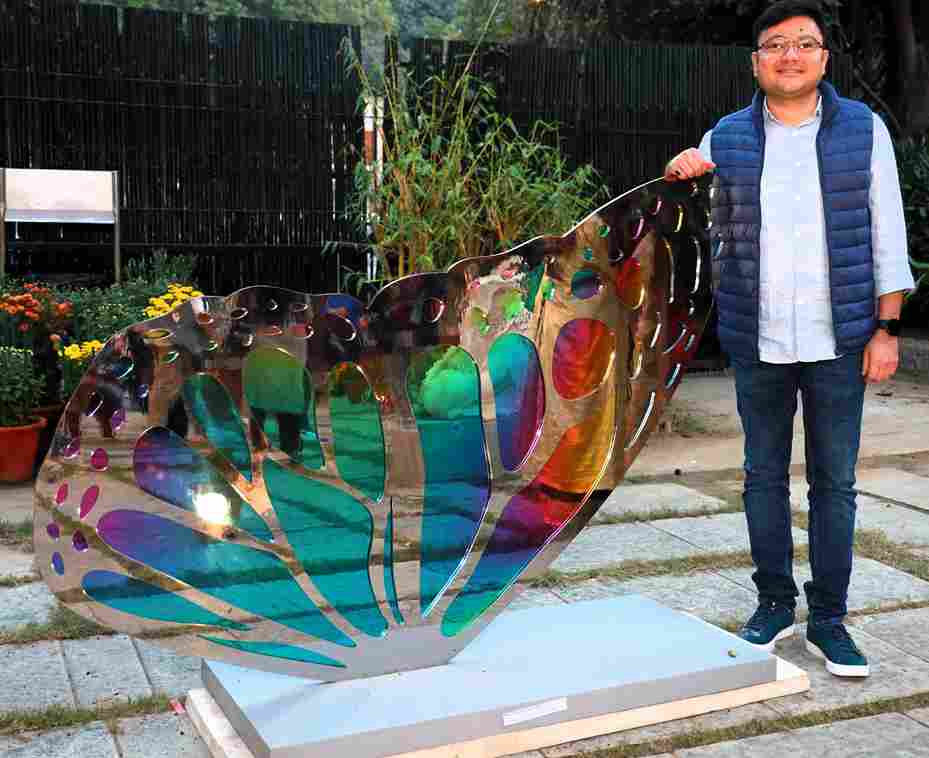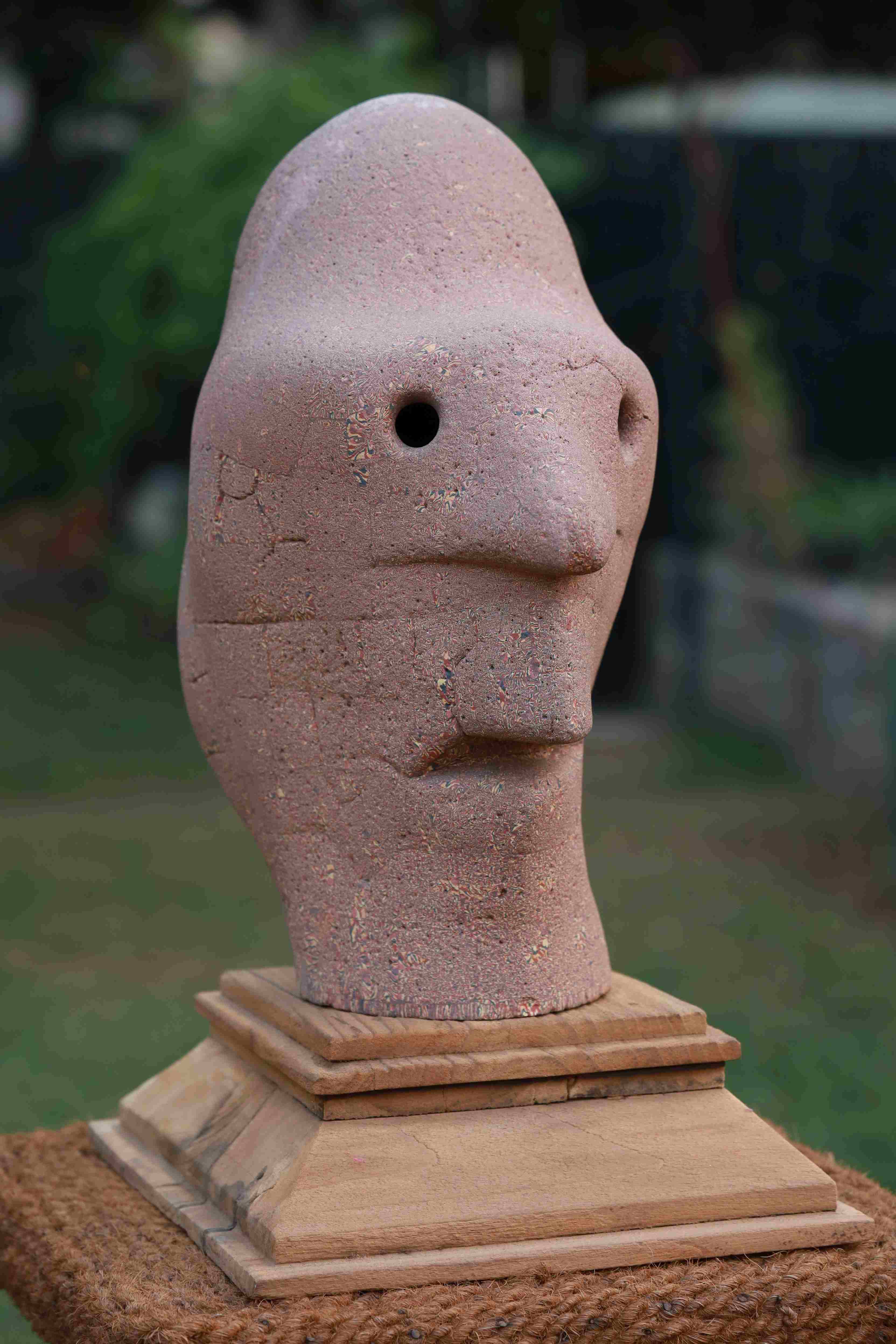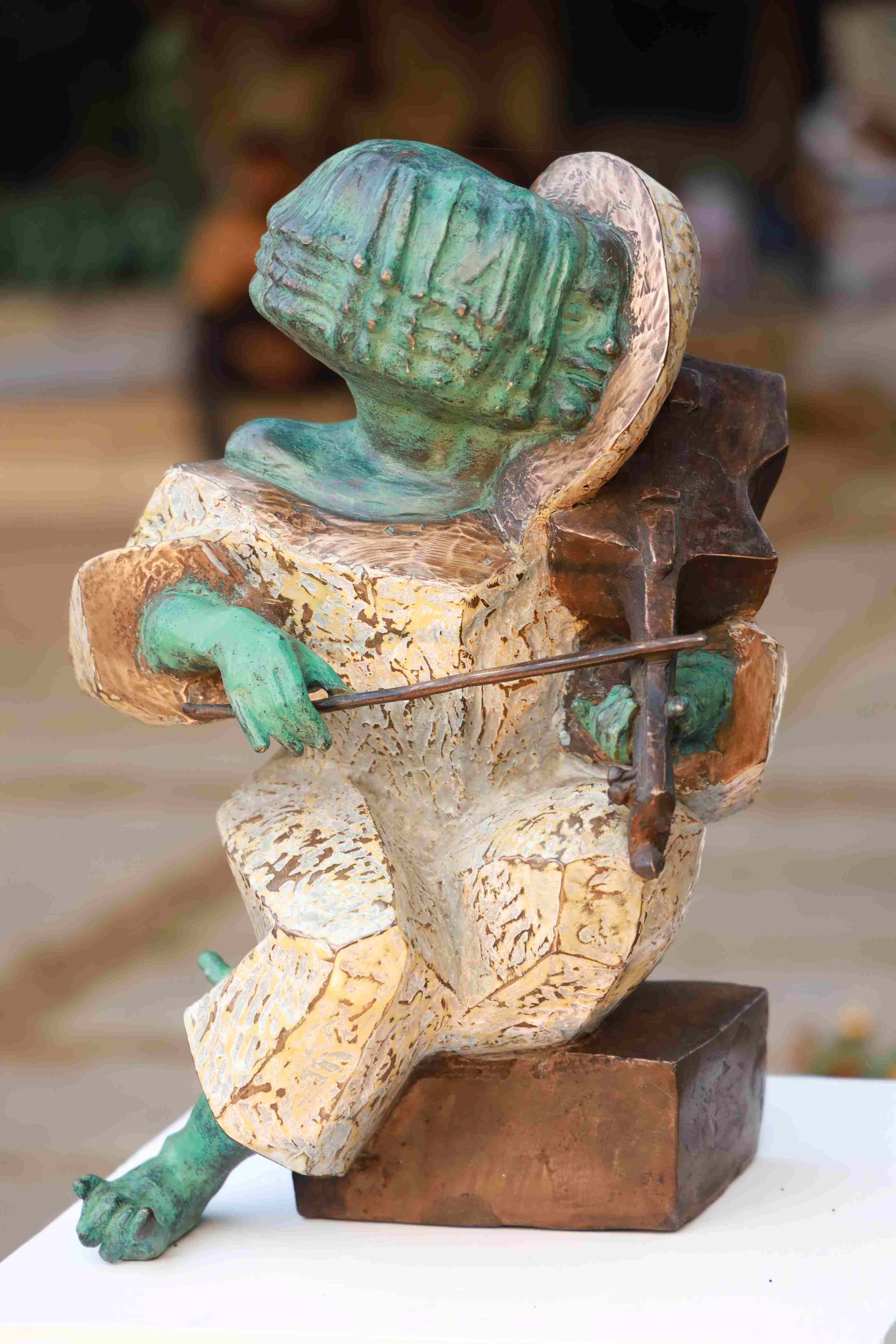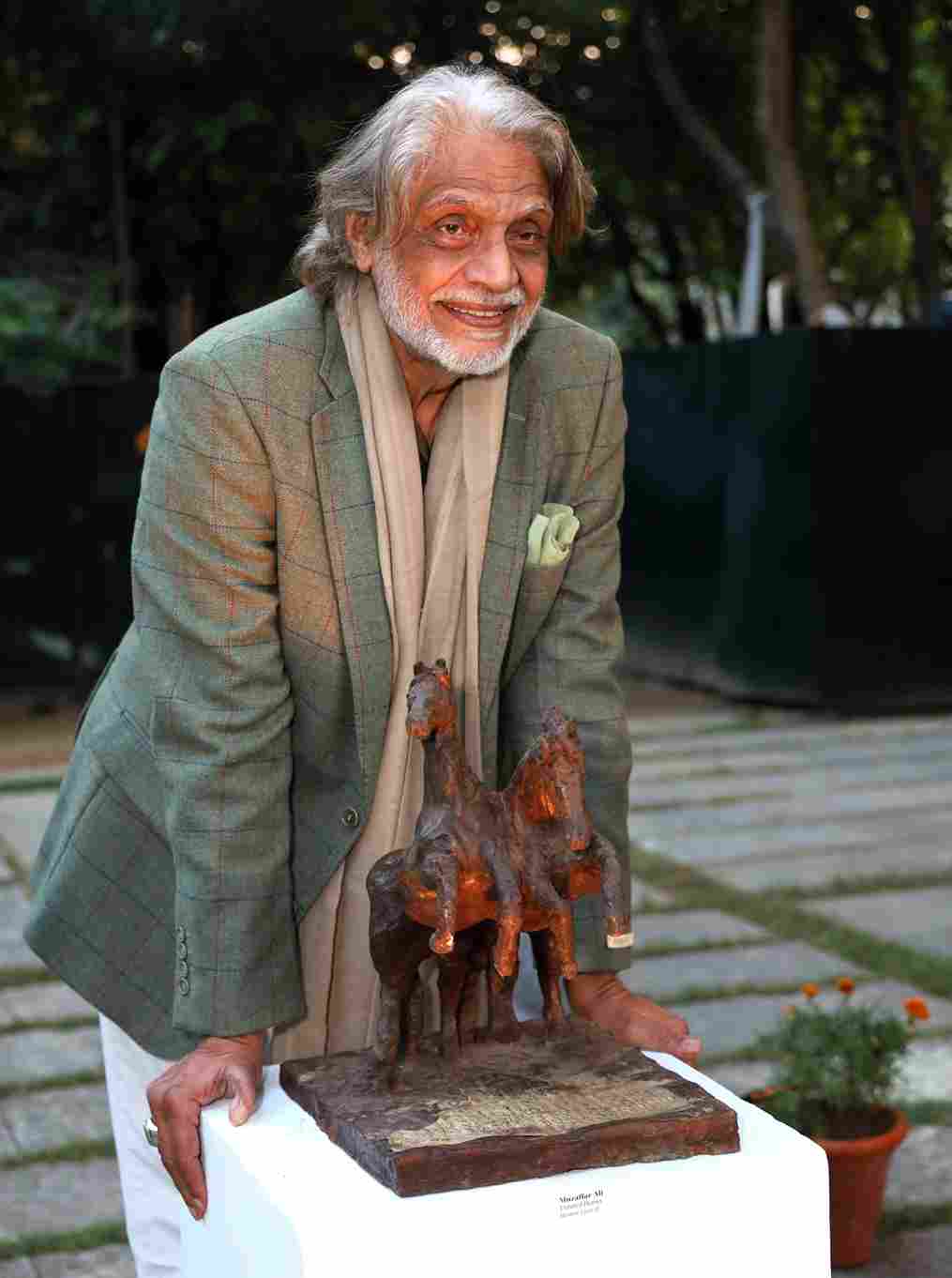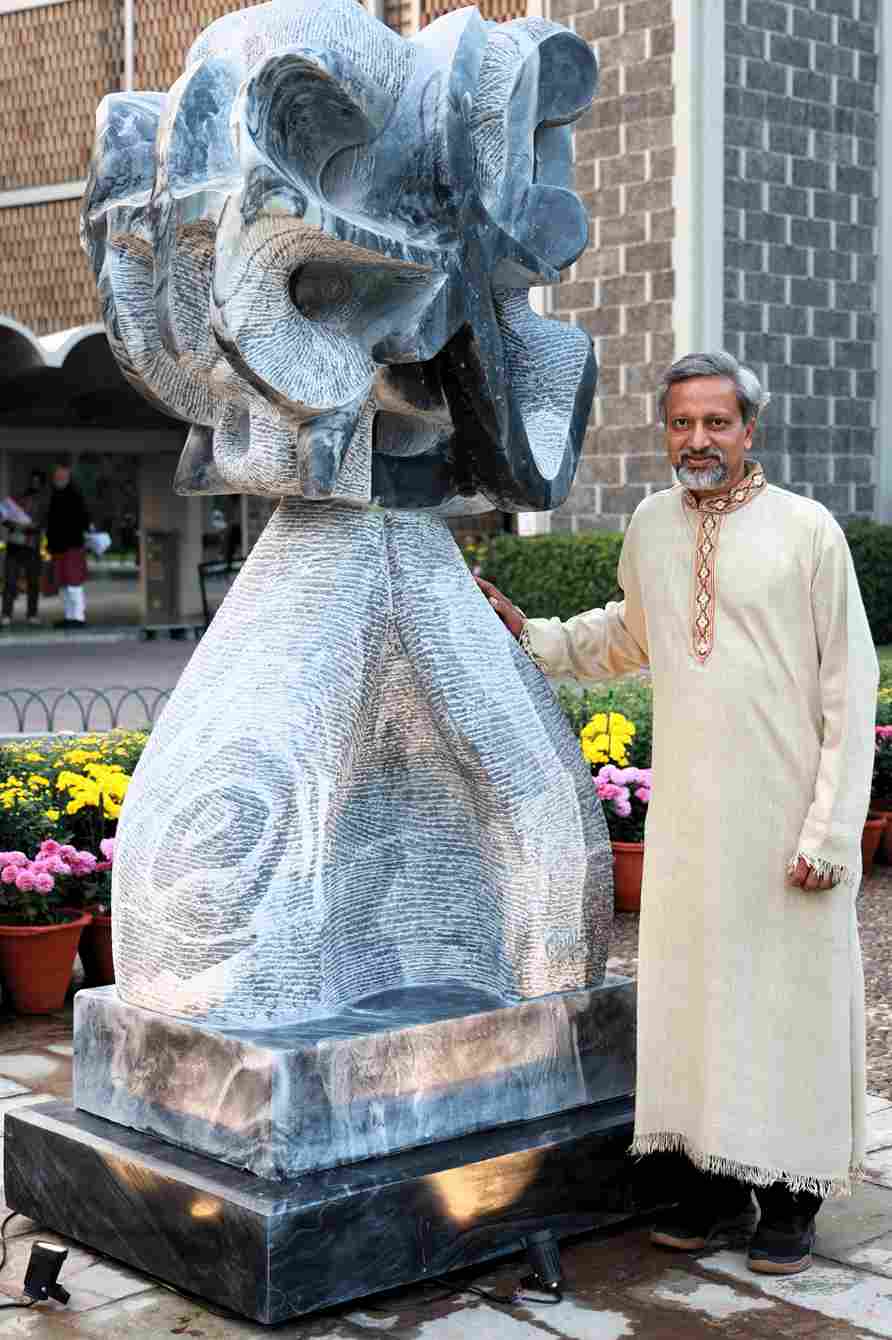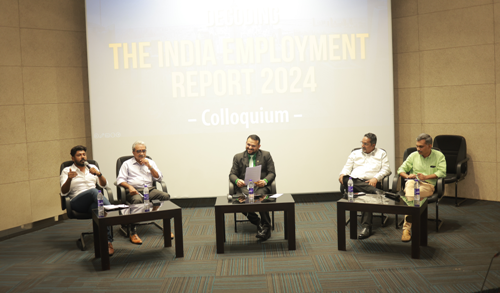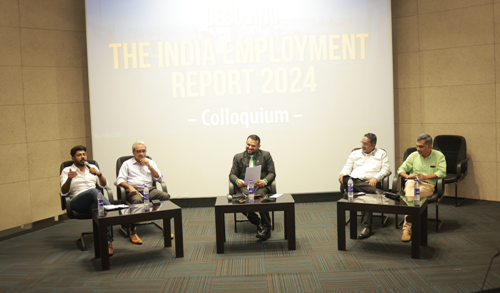Emerging sculptors prominent at Delhi show on Keshav Malik @ 100
New Delhi / December 18, 2023
New Delhi, Dec 18: With its closed wings and head down, Phaneendra Nath Chaturvedi’s butterfly bears a posture in static motion, as if readying to fly and take India’s sculpting scenario further upward. The multicolour work in stainless steel carries the vibrancy and sturdiness of contemporary art in the subcontinent — as does the entire set of 24 exhibits at a milestone show in the national capital.
As a tribute to many-faceted cultural personality Keshav Malik on his birth centenary, the 15-day iSculpt is catching connoisseurs’ attention as a milestone event hosting young and established visual artists from across the country. Being organised by the Delhi Art Society (DAS) founded by Malik (1924-2014), the event ending this Thursday has been curated by scholar-historian Uma Nair.
“Phaneendra’s ‘Ekayatam’ is like a strand of magic that conveys the joy of life,” notes Uma, whose ‘iSculpt’ is currently into its fifth edition at India International Centre (IIC) this time as well. “Its fluttering wings, in effect, borrow shades from the celestial palette and seem to dance in the worlds of the ordinary as well as celestial.”
While the works of Varanasi-born Phaneendra, 42, have been regular at exhibitions from the turn of this century, iSculpt has Andhra Pradesh’s Harsha Durugadda from the same generation, but with his artwork in painted birch-wood. Known generally for his large-scale sculpting, the Hyderabad-based Harsha’s ‘Topo’ at the December 7-21 show is inspired by an Indian toy and juxtaposed with pyramidal structures resembling contemporary urban architecture.
Then there is architect-turned-sculptor Nimesh Pilla’s unicorn. The mythical theme, done in aluminium, goes for a realistic depiction, spelling an “echo of all kinds of beings and tales that come reeling into one’s album of memories”, notes the curator. Uma, considering the love Malik always had for photographs, besides of course paintings, has accommodated a set of nine monochromes by lensman Manoj Arora, also in his 40s.
Sculptor Neeraj Gupta, who is president of the 2005-established DAS, recalls Malik’s quest for promoting public art amid his deep knowledge about cultural practices across continents. “Today, if Delhi’s own Buddha Jayanti Park has sculptures in the shape of vanished trees from a 100-acre semi-forest, DAS has its definite role,” points out the 54-year-old artist, whose couple of works feature at iSculpt. With highly individualistic ideas and design, the architectural engineer-turned-sculptor is reputed as a green activist too.
Aptly, among its 24 exhibits on IIC’s poolside Gandhi King Plaza, iSculpt has one up the central tree of the venue. Sticking to a couple of its branches is Ankon Mitra’s ‘A Fleeting Moment of Infinite Bliss’, using modular aluminium sheets. Hand-folded and powder-coated to brass finish, it portrays the desirable ability to smile benignly at life, knowing well the endless dreariness of material existence.
Retired bureaucrat K.N. Shrivastava, who is now Director of IIC which is a non-governmental organisation that serves as a joint for cultural and intellectual viewpoints across ideologies and regions, recalls Malik’s “unparalleled” contributions to the world of art. “Besides writing on visual arts for frontline journals, his edited niche magazine Thought, reinforcing one’s eminence in literature,” he adds. “All these were following his return from Europe in the late 1950s after scholarly studies in Western art.” While Delhiite Malik was closely associated with IIC since its inception in 1962, he founded DAS at the age of 81.
Among the elderly or late artists at iSculpt are Satish Gujral, Amar Nath Sehgal, Himmat Shah and Satish Gupta. “Also, two women artists have lent iSculpt unique feminine identities in their works,” adds Uma about portrait artist Sonia Sareen (who has been working for 20 years) and Rini Dhumal (1948-2021), a polymath known for her Devi series printmaking and sculptures.
Ganesha by Sehgal (1922-2007) wears a narrative appearance steeped in formalism, with the sculpture’s trunk flowing down a hollowed-out space. The bronze work, Uma points out, suggests the vitality of the wisdom and benevolence of the elephant-headed god. “In the gently flowing profile, we sense a symbol of abundance as well as approachable serenity,” she notes.
Venerated Himmat Shah’s head of a woman at iSculpt is a rare composition, created in London at a prestigious casting studio. “Abstraction, for me, is to explore the conscious from the real, a desire to seek out and give shape to the primordial image,” he notes about the image. Similarly, Rini’s work bears an “aura of tranquillity”, according to Uma. “This larger-than-life portrait draws attention to the simplicity of dress and pose.”
Adding grace to the show are Biman Das’s elegant Buddha steeped in peace as reflected in the ascetic’s meditative sitting under the tree and Dhananjay Singh’s pair of human heads treated with verve that lights up his eminence in experimental practice, besides G. Reghu untitled stoneware of a seated couple in a composition of reverie. Filmmaker Muzaffar Ali, known for his love for horses, has come up with a pair of the animal created as a simple cast, reviving memories from the annals of history.
Neeraj Gupta, with his Krishna series, depicts the composite symbols, ideas and cultural knowledge of the subcontinent’s civilization, reminding the viewers that art has a continuous existence. Satish Gupta’s ‘Mother India’ is a study in expression, bearing a head with a face of deep divinity, depicting the Devi with her grace and gravitas.
Arun Pandit’s ‘Musician’ essays the face of a violinist in a posture symbolising simplicity and humility. It celebrates grand artistry in an internet age riddled with multiple memories and references. Bhola Kumar, another national award winner who works on different kinds of stone, focuses on a “slow churning of forces” at iSculpt. N S. Rana, whose ‘Solace’ is about the beauty of “less is more”, goes for an aperture in the centre and bears minimalist mooring.
While Parmod Mann tacitly expresses the rarely-seen elegance around elongation, Rajesh Ram’s human hybrid figure of man and lion in stoneware represents imaginatively fascinating forms with mathematical perfection. Kolkatan Ram Kumar Manna’s two-decade-old Shiva is born of folk embers and influences, while the sandstone work by S.D. Hariprasad (also Harsha’s father) of a gentleman who looks like a sage. Gujral’s (1925-2020) sculpture reiterates love for granite, while Sonia’s Bhāvanāmayī is a sculpted head of an earth goddess. Vipul Kumar’s work, born out of thoughts on global warming, is done in porcelain, stoneware and marble.
Nonagenarian poet-philosopher Dr Karan Singh released the catalogue, calling for governmental efforts for wider appreciation of sculpting. The event began with Keshav’s wife and Sangeet Natak Akademi former Secretary Usha Malik lighting the lamp. Cosmetologist Simal Soin and fashion designer Ritu Beri announced iSculpt open after an invocatory Bharatanatyam dance by Geeta Chandran.
